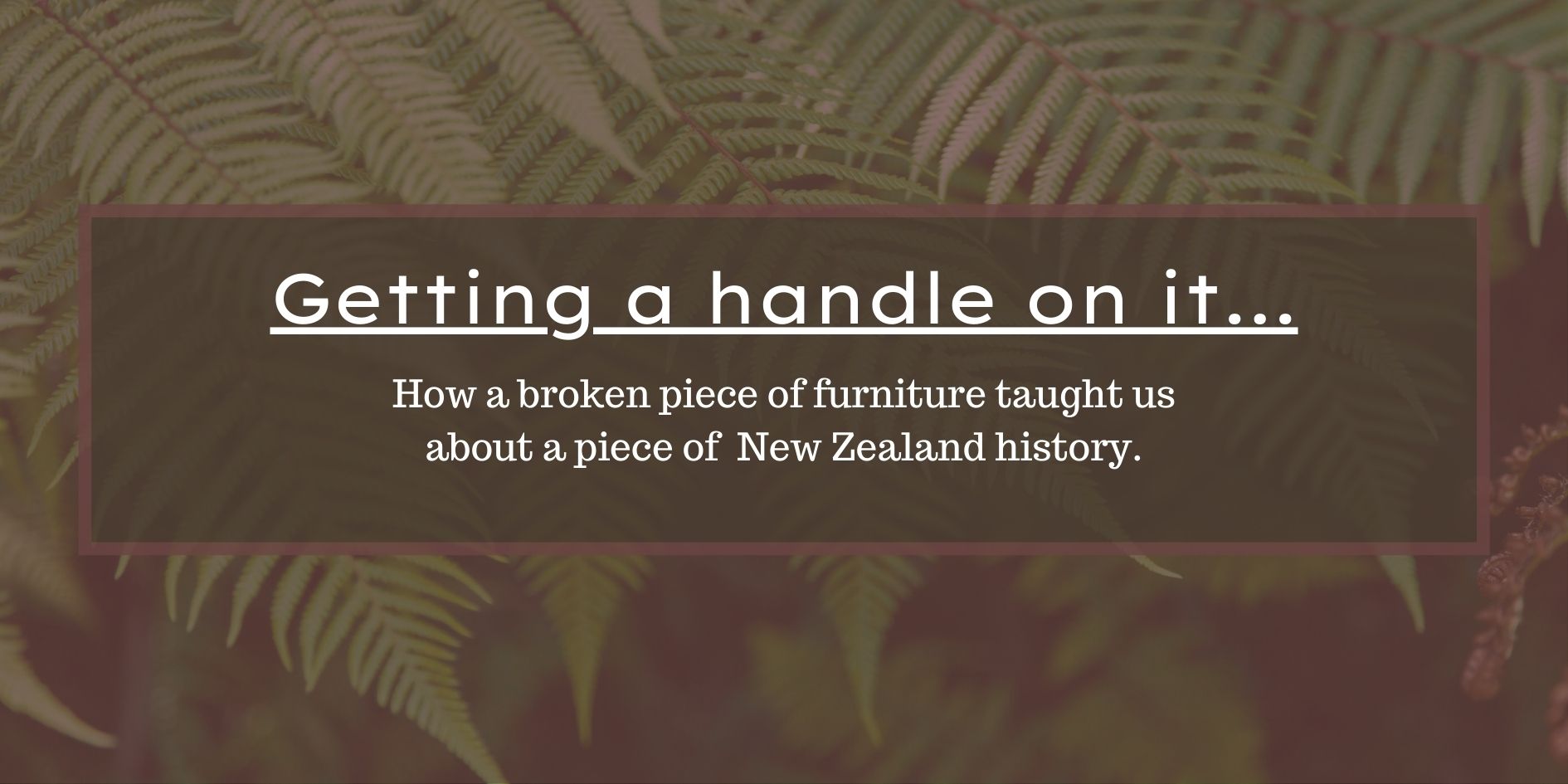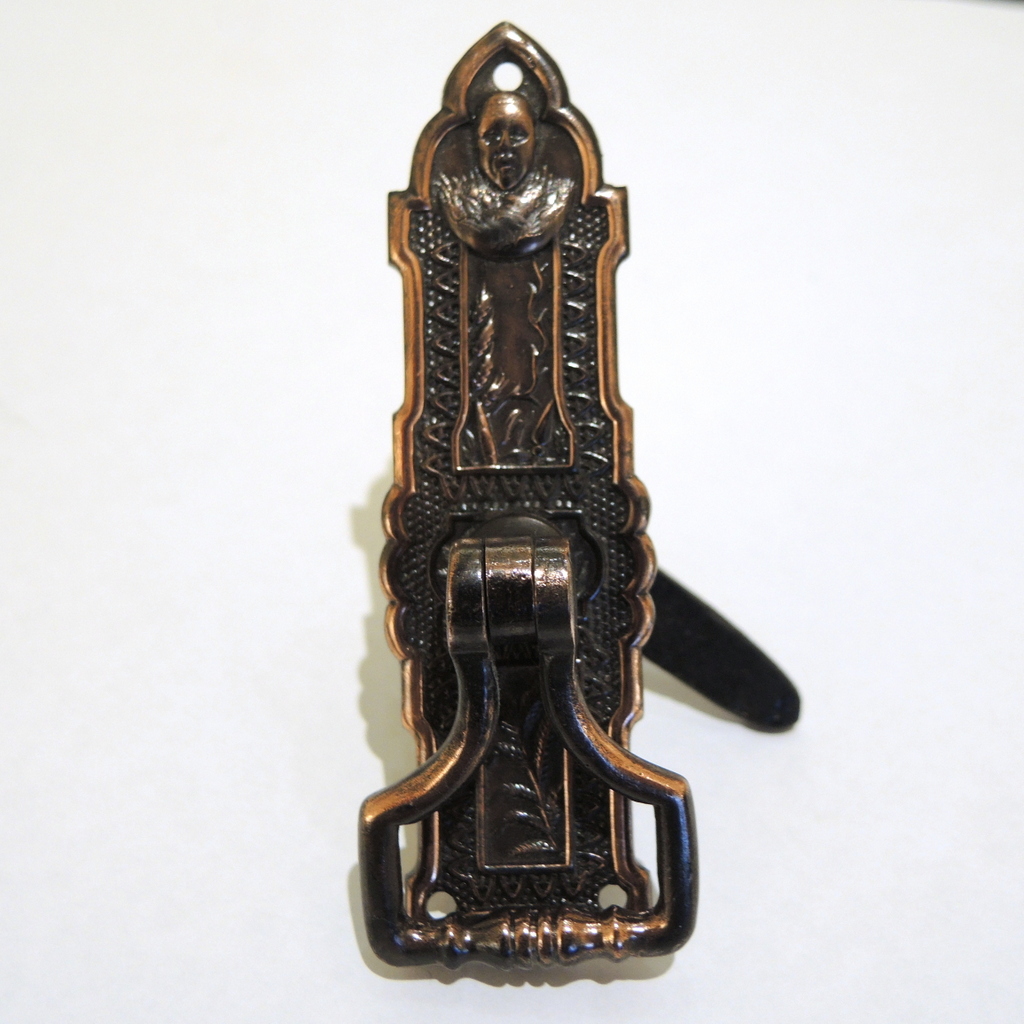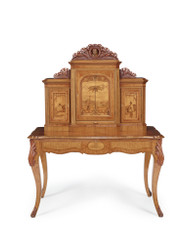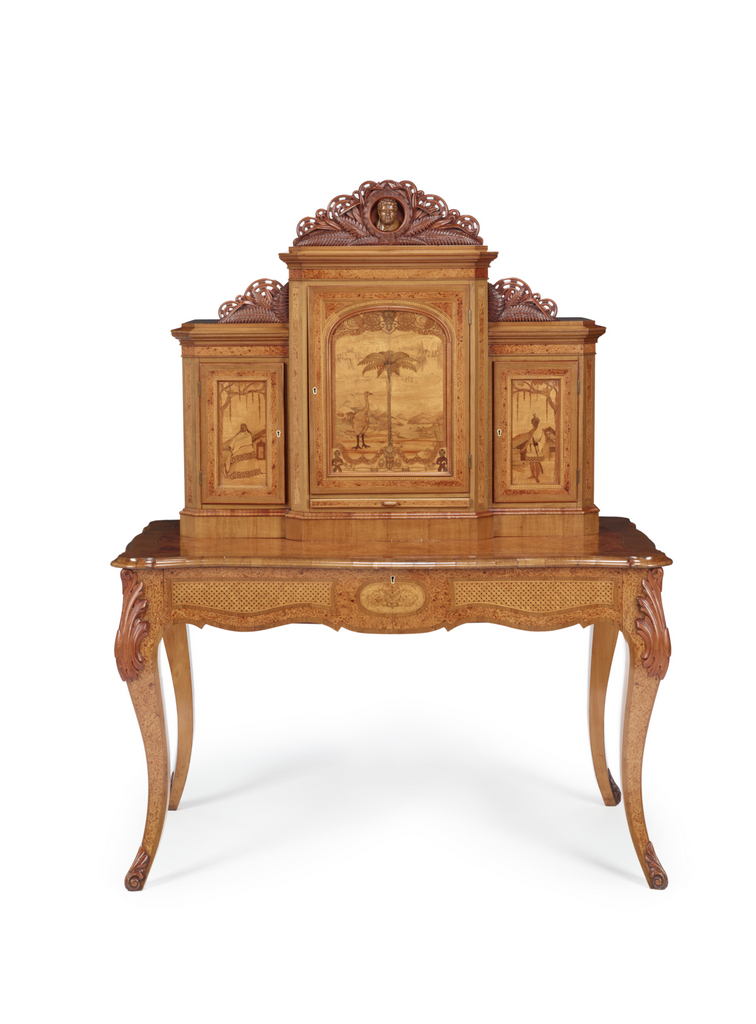23rd Feb 2022
Getting a Handle on it... How a broken piece of furniture taught us about a piece of New Zealand History.

Many a time we wish that our pieces of furniture could talk, as we know the stories they could tell would be amazing.
By whom were they crafted and where? What have they lived through? Who has loved them and used them?
If only they could talk and we could ask them. Some of the stories would be incredible, we are sure.
Many years ago, before emprades was even a thought, Pru was standing at an auction. Before her stood a wardrobe. It was made from Kauri Pine, the timber itself rather plain and heavily stained... but it was the design of the piece that struck her.
A central lead-light panel was flanked by mirrored double doors, with an ornate carved panel above the lead light. On close inspection she noted the handles, beautifully crafted with the head of a man (perhaps an Apostle or Knight she thought at the time). The whole piece was unusual and intriguing so Pru bid on it and it was soon hers.
Unfortunately, some time later after it had been stored in the shed it became apparent that the piece was full of wood borers. This was extremely unnerving, for at the time she had quite a collection of antiques awaiting restoration, as she and Des had been busy investing in pieces with the thought that one day Pru might open an Antique shop (!).
This precipitated a large amount of urgent work quarantining and the subsequent fumigation of pieces. It seemed the source of the borers was indeed this wardrobe. Its base was severely damaged, and the piece was dismantled, with the salvageable elements put aside for use in other projects. Unfortunately, a dwindling market for antique wardrobes made the remaking and resurrection of the piece completely unviable.
The handles were something Pru couldn't part with. The sent them off to be professionally restored, thinking that one day the right piece may come along to use them again.
Fast forward more than 20 years. Pru dug the beautiful old handles out, and thought after all of these years, the 'right' piece had still not shown up. She decided to list them online and sell them to someone who could at least put them to good use.
Cue Dr. William Cottrell, an Auckland based academic and Author of "Furniture of the New Zealand Colonial Era (1830-1900)". William was searching the internet for other furniture components when he happened across these handles. He knew exactly what they were and purchased them for a project he was working on.
He proceeded to email us afterwards and gave us some intriguing information...
"The handles are NZ-made in Auckland by Anton Teutenberg. He made a
series of these with NZ themes. I have never been able to figure out
the date but it would appear to be mid-1870s. The figure of a man is
actually a Maori warrior."
Now he mentioned it... it was impossible not to see! The figure was indeed a Maori man, complete with fur cape and face tattoos. The various other motifs on the piece were specific to New Zealand too... the crossed spear and Taiaha (a Maori weapon & staff of authority), the fern, the new Zealand Flax spire. Also depicted are wheat heads... more of a Colonial influence.
Below is a picture of one of the handles mentioned.

So... Who was this Anton Teutenberg?
Born in Germany, Ferdinand Anton Nicolaus Teutenberg (known as Anton) immigrated to New Zealand in 1866 as a man in his mid twenties. An engraver, he learned his trade from his Father before immigration.
Anton's first commissions in New Zealand were stone carvings for public buildings and churches, and he soon gained a name for himself with his high quality workmanship. He was highly accomplished in wood carving, and created beautifully detailed pieces out of native New Zealand timbers... from items as small as pipes to large scale works like the ornamentation on Church Altars.
He soon formed a friendship with another immigrant - Anton Seuffert, a cabinet maker from Bohemia (an area that would now be the Czech Republic). Seuffert was a highly skilled Cabinetmaker who specialised in ornate pieces featuring exceptionally detailed work in marquetry and parquetry (the inlay of different timber veneers to create patterns and decorative motifs). He created high end opulent pieces for 'People of Note' that symbolised wealth and success.
Both being German speaking immigrants in Auckland, Teutenberg and Seuffert soon became acquainted and worked together to create beautiful pieces of furniture. Both men utilised iconography of their new home in their work... featuring the People, Flora and Fauna native to their new homeland.
Teutenberg's exquisite carvings were the 'icing on top' of Sueffert's highly elaborate designs with painstakingly detailed inlay.
The following piece is housed in the Museum of New Zealand (Te Papa Tongarewa) and it is a beautiful example of the creative collaboration of these incredible craftsman. The inlay scene features the 'Moa' (an extinct flightless bird native to New Zealand), standing next to a large tree fern with a mountainous scene to the background. There is a Maori woman to one side panel, and a man to the other. The carving by Teutenberg features a central Maori Man's head surrounded by a circular frame with traditional Maori decoration and flanked by Fern and Flax.
Writing Bureau, circa 1875, New Zealand, by Anton Seuffert, Anton Teutenberg. Bequest of Mrs E H Blair in memory of her late husband, Archibald Anderson Watt, 1918. CC BY-NC-ND 4.0. Te Papa (PF000079)
One of Sueffert's most well known pieces still sits within the rooms of Buckingham Palace. The writing cabinet was a gift from the people of Auckland to 'Her Majesty the Queen' Victoria and is still housed within the Royal Collection to this day. You can view the beautiful piece on the online Royal Trust Collection here.
Even though he was such an accomplished woodcarver and sculptor, Tuetenberg's most prolific output was as a medalist, and he struck many different tokens and medals for use through out the Country. He opened a shop front with his brother Karl and in 1870 they published the following advertisement...
"A & K Tuetenberg, Engravers, Carvers and Gunmakers. Are prepared to execute Stamps for Goldmining Companies, Dies with Presses etc., at the shortest notice and with superior style." Auckland Star, Volume 1, Issue 147, 29th June 1870, Page 4. Source -https://paperspast.natlib.govt.nz/newspapers/AS187...
So now it is easy to see how Teutenberg was the creator of these beautiful handles... with his unique skill set and an aesthetic preference towards all things 'New Zealand'. How wonderful to see an 'ordinary' utilitarian piece of hardware with such a unique and interesting provinence. It seems as though the handles were produced and sold as somewhat of a 'commercial' item by Teutenberg, as the furniture they appear on are not items made by himself or Seuffert.
Teutenberg was certianly an extremely skilled craftsman and among the items left on this earth in private and public collections are fine jewellery (again featuring exquisite detail with the Flora and Fauna endemic to New Zealand), silver napkin rings, stone and wooden carvings and sculptures, medals, coins and tokens, brass seals and more!
He certainly seems to have been quite the 'Jack Of All Trades' and was a very skilled entrepreneur and business man.
To view more of his work you can visit the following links to his works in the Museum of Auckland and the Museum of New Zealand.
Anton Teutenberg in the Auckland Museum
Anton Teutenberg in the Museum of New Zealand
So... now we have a handle on that one, we wonder what our next piece of furniture will teach us?
Special thanks to Dr. William Cottrell for taking us down that delightfully enlightening rabbit hole!


